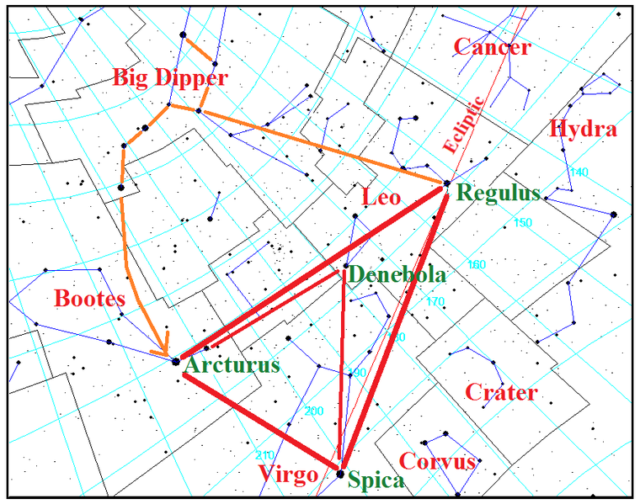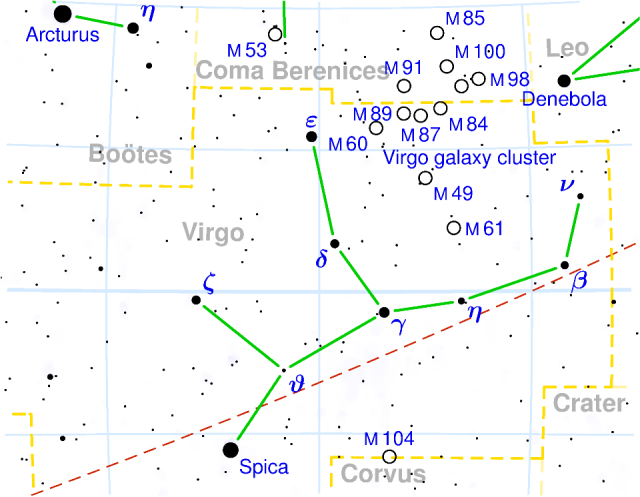The Spring Triangle is a prominent spring asterism formed by the bright stars Arcturus in Boötes constellation, Spica in Virgo, and Regulus in Leo. The asterism can be seen in the southeastern sky from March to May by observers in the northern hemisphere. It shares two stars – Arcturus and Spica – with the larger spring asterism known as the Great Diamond, or Diamond of Virgo.
The Spring Triangle is easy to find using the stars of the Big Dipper. The line formed by the three stars of the Dipper’s handle leads first to Arcturus and then to Spica. Regulus, the third star of the triangle, can be found along a line extended from Megrez to Phecda, the two inner stars of the Dipper’s bowl.
Sometimes the Spring Triangle is taken to be the asterism formed by Arcturus, Spica and Denebola instead of Regulus, making a more nearly equilateral triangle. Denebola, which marks the Leo‘s tail, is slightly dimmer than Regulus, but with a visual magnitude of 2.113, it is still easily visible to the unaided eye.
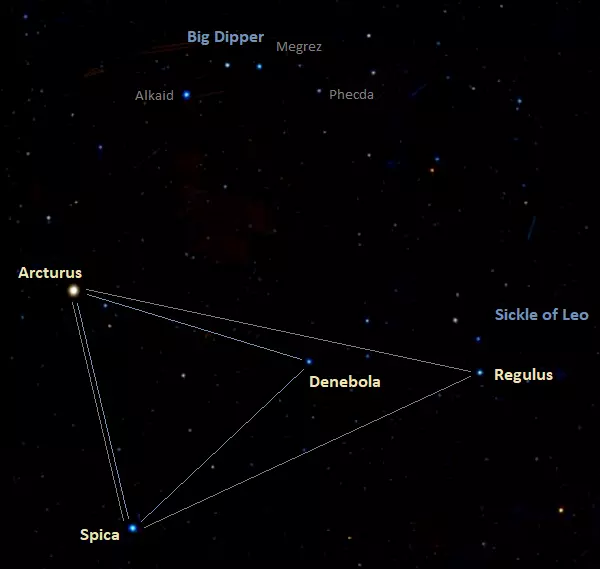
Spring Triangle, image: Wikisky
Stars
Arcturus, the brightest star in the constellation Boötes, is also the brightest star in the northern skies. With an apparent magnitude of -0.05, it is only dimmer than Sirius, Canopus and Alpha Centauri, the three brightest stars in the sky, located in the southern constellations Canis Major, Carina, and Centaurus respectively. Arcturus is in fact the third brightest individual star in the sky, slightly ahead of the brighter component in the Alpha Centauri system.
Arcturus lies at a distance of only 36.7 light years from Earth and is one of the most luminous stars in the relative vicinity of the solar system. It is an orange giant star with the stellar classification K0 III, a mass 1.08 times that of the Sun, and a radius 25.4 times solar.
Spica, the brightest star in Virgo constellation and the 15th brightest star in the sky, lies at a distance of 250 light years from Earth and has an apparent magnitude of 0.97. It is a spectroscopic binary star composed of two stars that are so close together that they are egg-shaped, making the system a rotating ellipsoidal variable. The primary component in the Spica system is a blue giant star classified as a Beta Cephei type variable, which means that it exhibits small variations as a result of pulsations of its surface. The two stars orbit each other every four days and cannot be resolved through a telescope.
Regulus, the brightest star in Leo constellation, lies at a distance of 79 light years from Earth and is composed of two pairs of stars. Regulus A is a spectroscopic binary system composed of a blue-white main sequence star and a companion believed to be a white dwarf. The two stars orbit each other about every 40 days. The Regulus system is the 21st brightest star in the sky, with a combined visual magnitude of +1.35.
Deep sky objects
The Spring Triangle contains a number of notable deep sky objects. Most of them belong to the Virgo Cluster, a large cluster of galaxies found between the stars Vindemiatrix in Virgo and Denebola in Leo. The cluster contains about 1,500 galaxies. The most prominent members include the bright galaxies Messier 49, Messier 60, Messier 84, Messier 86, Messier 87 (Virgo A), the Siamese Twins (NGC 4567 and NGC 4568), and the Eyes Galaxies (NGC 4435 and NGC 4438). Messier 49 is the brightest member of the cluster. It is more luminous than any galaxy closer to the solar system.
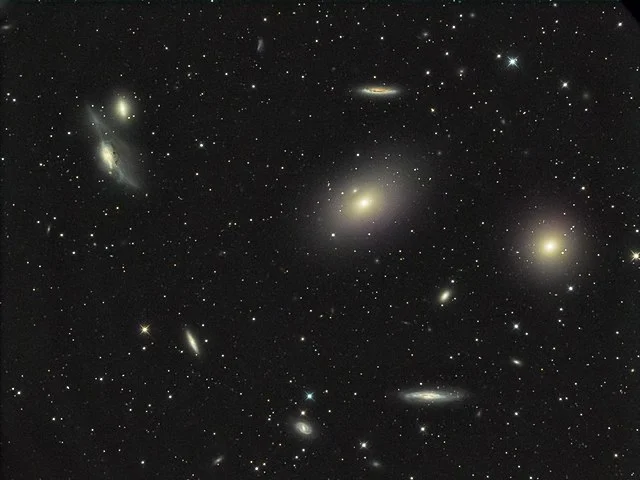
The centre of the Virgo Cluster, image: Carsten Frenzl (CC BY 2.0)
Several notable galaxies lie in the region between Regulus and Denebola in Leo. These include the members of the Leo Triplet (Messier 65, Messier 66 and NGC 3628, also known as the Hamburger Galaxy) and the M96 Group (Leo I Group), which consists of the galaxies Messier 95, Messier 96, Messier 105, and at least nine other members.
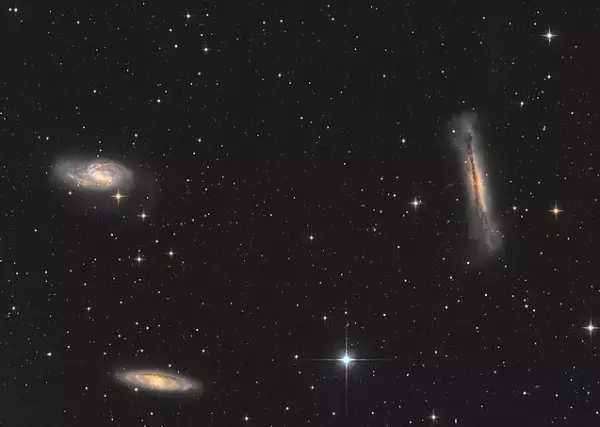
Leo Triplet, image: Wikimedia Commons/Marekmazuch (CC BY-SA 4.0)
The Boötes Dwarf Galaxy, also known as Boötes I, can be found near Arcturus in Boötes and the globular cluster Messier 53 in Coma Berenices also lies close to the star, in the direction of Regulus. The galaxies Messier 85 and Messier 100 are found a bit further along the same line, also in the constellation Coma Berenices.
